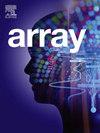A framework for post-prognosis decision-making utilizing deep reinforcement learning considering imperfect maintenance decisions and Value of Information
IF 4.5
Q2 COMPUTER SCIENCE, THEORY & METHODS
引用次数: 0
Abstract
The digitalization era has introduced an abundance of data that can be harnessed to monitor and predict the health of structures. This paper presents a comprehensive framework for post-prognosis decision-making that utilizes deep reinforcement learning (DRL) to manage maintenance decisions on multi-component systems subject to imperfect repairs. The proposed framework integrates raw sensory data acquisition, feature extraction, prognostics, imperfect repair modeling, and decision-making. This integration considers all these tasks independent, promoting flexibility and paving the way for more advanced and adaptable maintenance solutions in real-world applications. The framework’s effectiveness is demonstrated through a case study involving tension-tension fatigue experiments on open-hole aluminum coupons representing multiple dependent components, where the ability to make stochastic RUL estimations and schedule maintenance actions is evaluated. The results demonstrate that the framework can effectively extend the lifecycle of the system while accommodating uncertainties in maintenance actions. This work utilizes the Value of Information to choose the optimal times to acquire new data, resulting in computational efficiency and significant resource savings. Finally, it emphasizes the importance of decomposing uncertainty into epistemic and aleatoric to convert the total uncertainty into decision probabilities over the chosen actions, ensuring reliability and enhancing the interpretability of the DRL model.
考虑不完善维护决策和信息价值的深度强化学习后预后决策框架
数字化时代带来了丰富的数据,可以用来监测和预测结构的健康状况。本文提出了一个综合的后预测决策框架,该框架利用深度强化学习(DRL)来管理多组件系统不完美修复的维护决策。提出的框架集成了原始感官数据采集、特征提取、预测、不完美修复建模和决策。这种集成考虑了所有这些任务的独立性,提高了灵活性,并为在实际应用程序中实现更先进、适应性更强的维护解决方案铺平了道路。通过一个案例研究,该框架的有效性得到了验证,该案例研究涉及代表多个相关组件的裸眼铝板的拉伸-拉伸疲劳实验,其中评估了随机RUL估计和计划维护行动的能力。结果表明,该框架可以有效地延长系统的生命周期,同时适应维护行为中的不确定性。这项工作利用信息的价值来选择获取新数据的最佳时间,从而提高了计算效率并节省了大量资源。最后,强调了将不确定性分解为认知性和任意性的重要性,将总不确定性转化为所选行为的决策概率,保证了DRL模型的可靠性,增强了模型的可解释性。
本文章由计算机程序翻译,如有差异,请以英文原文为准。
求助全文
约1分钟内获得全文
求助全文

 求助内容:
求助内容: 应助结果提醒方式:
应助结果提醒方式:


